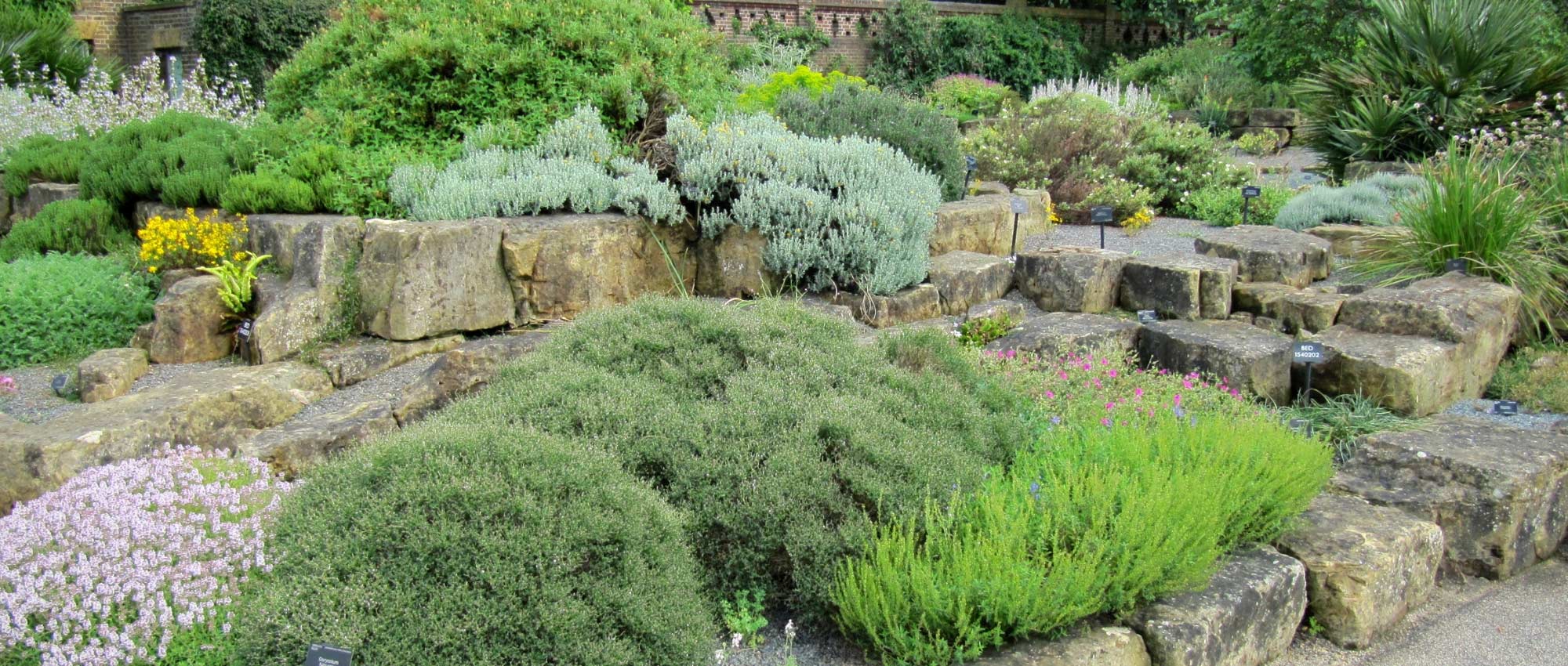
15 plants for a sunny rockery
Discover our selection!
Contents
Rock garden plants tolerate drought well and adapt to poor, often stony, well-drained soils. These plants need well-draining ground that does not retain winter moisture. They are undemanding and require little maintenance. Most are low-maintenance rock garden plants, small, not very tall, but with a spreading or mat-forming habit. To give a little volume to a rock garden in full sun, you can plant a few small conifers or bushes at the back that tolerate poor, stony soils: cistus, broom, Grevillea, Chamaecyparis obtusa ‘Nana Gracilis’…
Finally, alpine perennial plants and some coastal species are ideal for this use: hardy and well adapted to dry, sunny conditions typical of rock garden flowers.
What is a rock garden plant?
A rock garden plant can grow in poor, dry, stony and well-drained soil. It tolerates full sun (although there are also shade rock garden plants), arid conditions and requires little maintenance. You will find perennials, groundcovers, succulents and sometimes small bushes. Perfectly suited to embankments, low walls or dry borders, these plants offer generous flowering and great hardiness.
Rock garden plants for full sun
Creating a rock garden in full sun means coping with heat, drought and often poor or stony soil. Here is a selection of sun-loving rockery plants, both hardy and long-lasting, ideal for brightening the sunniest areas of the garden.
Sedums, easy rockery plants
Sedums offer great diversity in foliage shapes and colours, perfect for structuring a rock garden in full sun. Many small, mat-forming species exist, notably Sedum reflexum ‘Angelina’, with yellow-green leaves, or Sedum spurium ‘Album Superbum’, with pale green leaves and white flowers. Sedums spread easily over time thanks to their creeping stems, while some species have upright stems (such as Sedum ‘Autumn Joy’), which add a little height.
This low-maintenance rockery plant produces starry flowers in a range of colours depending on variety. Highly tolerant of drought and high temperatures as well as frost, sedums thrive even in poor or stony soil. Little affected by disease, these rockery plants require almost no care.
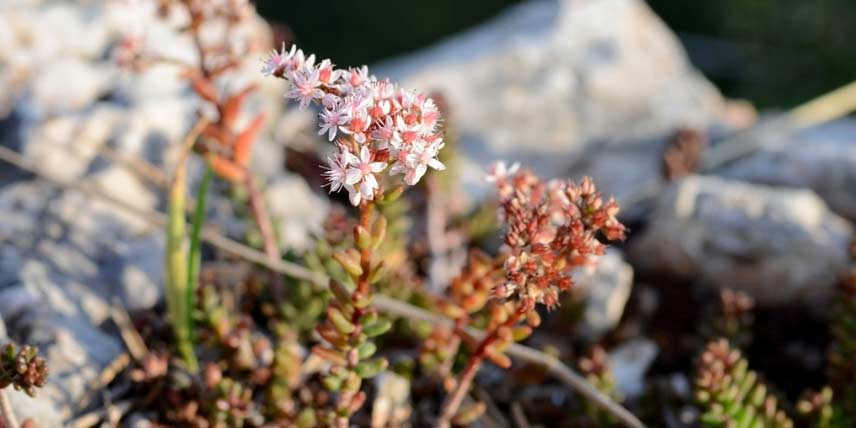
Sedum album (photo Radio Tonreg)
Houseleeks, champions of no-fuss rockeries
Houseleek, or Sempervivum, is a particularly prized no-fuss rockery plant thanks to its graphic appearance and exceptional hardiness. This small succulent perennial forms compact, attractive rosettes made of fleshy, imbricate leaves, often green but sometimes tinged with purple, bronze, glaucous blue or almost black depending on variety. Among the most distinctive, Sempervivum arachnoideum is recognised by rosettes covered in fine white filaments, like a spider’s web.
In summer, houseleeks produce star-shaped flowers in shades of pink, red or yellow, bringing vivid colour to sunny rockeries. Able to establish in very little substrate, they fit easily between stones, on low walls or at the edge of beds. Despite their succulent look, they are very hardy and tolerate frost well, making them an ideal rockery plant even in cold climates.
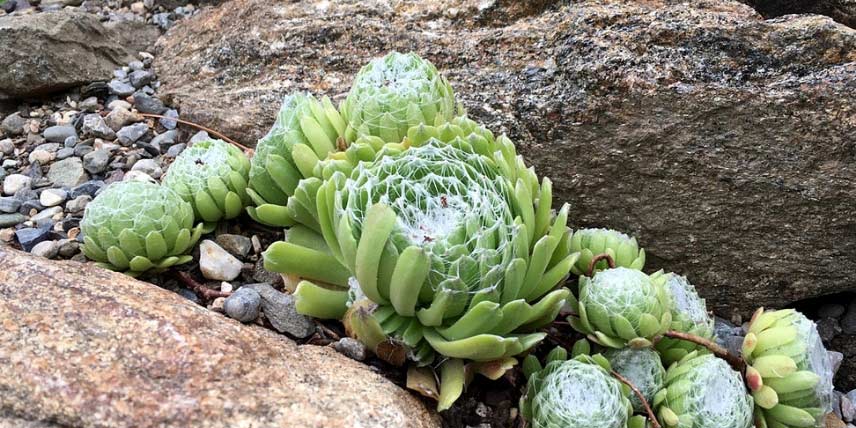
Phlox subulata, a carpet of rockery flowers in spring
Phlox subulata is a charming rockery plant, ideal for creating a carpet of starry flowers in spring, often pink but also mauve, blue or white depending on variety. Rockery flowers, with five petals, are so numerous they almost entirely hide the foliage.
Undemanding, Phlox subulata reaches only 15–20 cm in height and spreads quickly to form an attractive ground cover. Notable varieties include Phlox subulata ‘Candy Stripes’, prized for its pale pink petals edged in white. This hardy phlox naturally finds its place in a sunny rock garden alongside Phlox bifida and Phlox douglasii, also suited to dry, stony borders.
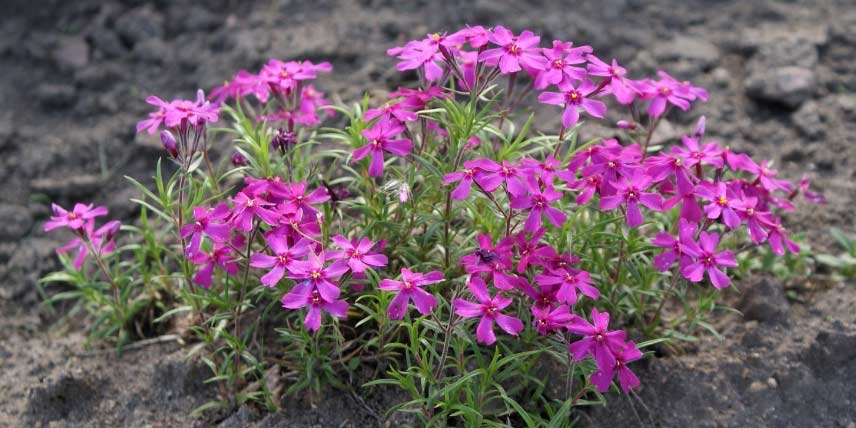
Helianthemum, generous rockery blooms even in poor soil
Helianthemum is a low-maintenance rockery plant that forms a small, spreading shrub. Its fine, elongated leaves are evergreen or semi-evergreen depending on variety. Not exceeding 30 cm in height, it covers ground effectively while adding colour from spring.
Its abundant, long-lasting flowering, from May to September, offers a wide palette of bright colours: yellow, orange, red, pink or white. Each flower is adorned in its centre with a cluster of bright yellow stamens, enhancing overall brilliance. Tough and undemanding, helianthemum thrives even in poor, dry, well-drained soil, making it an ideal rockery flower for full sun.
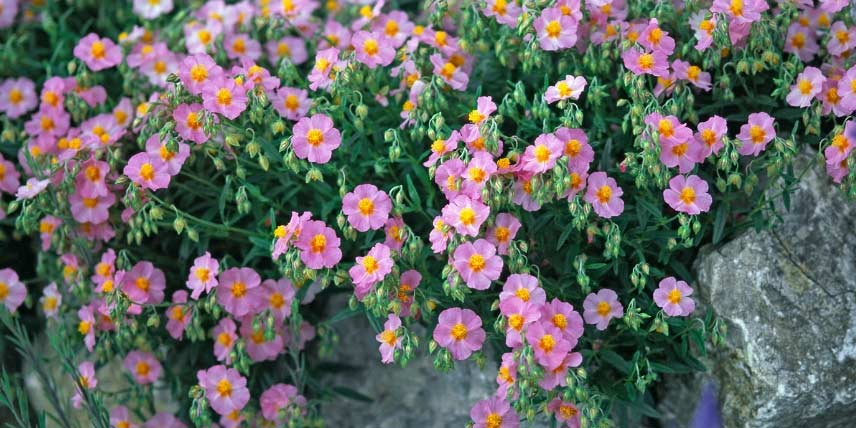
Helianthemum ‘Lawrensons Pink’ (photo Friedrich Strauss – MAP)
Iberis sempervirens, a glowing white cushion
Also called silver candytuft, Iberis sempervirens is a no-fuss rockery plant, ideal for sunny borders. This mat-forming perennial does not exceed 30 cm in height and spreads easily to form a dense, luminous ground cover.
Its spring display reveals a profusion of melliferous white flowers gathered into rounded inflorescences. They contrast nicely with dark green, fine, elongated, persistent foliage that remains decorative through winter. Among popular varieties, ‘Snowflake’ offers a pure, brilliant white, while Iberis ‘Absolutely Amethyst’ stands out with rarer purple shades.
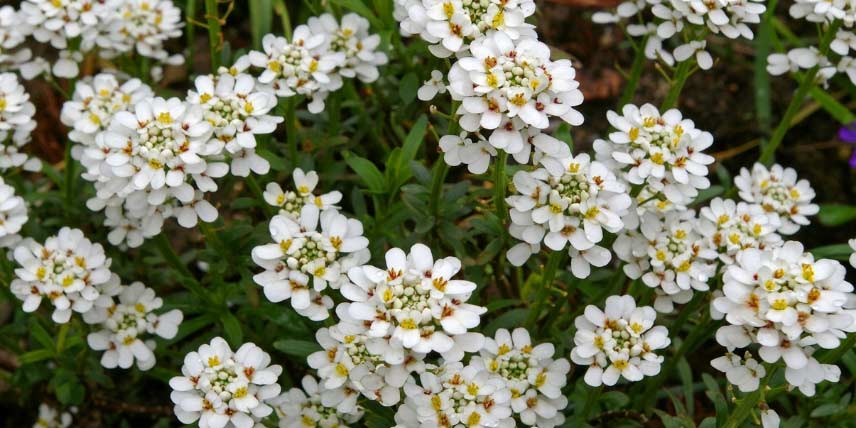
Iberis sempervirens ‘Alexander White’ (photo D. Jolivet)
Aubretias, perfect for the tops of walls
Aubretias are no-fuss rockery plants that produce an abundant, colourful spring display. Their small, very melliferous flowers come in violet, reddish-pink or blue depending on variety, forming a flowering carpet that attracts pollinators.
These mat-forming perennials, under 15 cm tall, cover ground effectively thanks to their spreading, slightly trailing habit, perfect for dressing a stone wall or edging a rock garden. Their evergreen, dense green foliage remains decorative all year. Hardy and undemanding, aubretias thrive in sunny, well-drained situations and are ideal companions for sun-loving rockery plants.
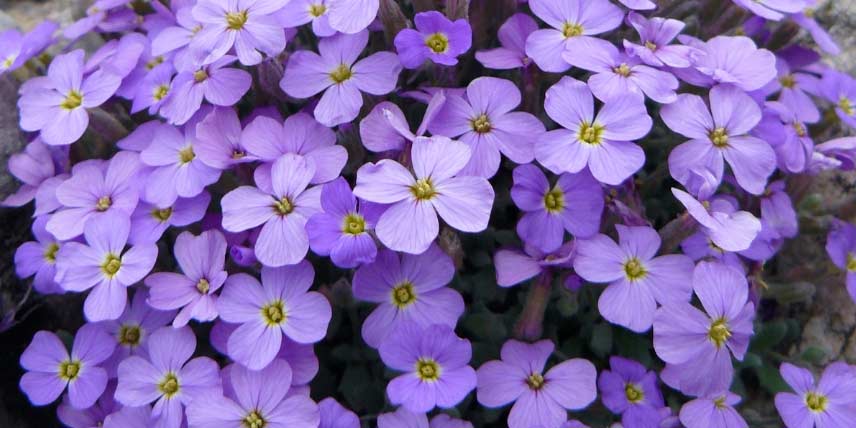
Aubrieta ‘Novalis Blue’
Erigeron karvinskianus, rockery flowers throughout summer
Erigeron karvinskianus is an airy rockery plant, ideal for enlivening sunny borders. This floriferous perennial charms with a long, wispy display from May through October. It produces numerous small, daisy-like rockery flowers, white or pink, each with a bright yellow centre.
Its loose habit, with thin, slightly untidy stems, is perfect for softening edges, wall crevices or paving joints. Easy to grow and low-maintenance, it often self-seeds, extending its decorative effect season after season.
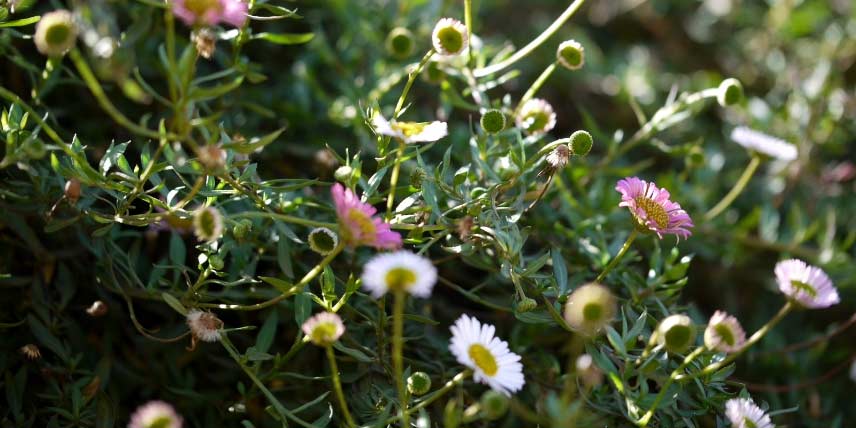
Erigeron karvinskianus (photo Dinesh Valke)
Hardy geraniums suited to rock gardens
Hardy geraniums stand out for their generous flowering and adaptability. Their flowers, with finely veined petals and darker centres in shades of mauve, pink, blue or white, appear in abundance above small clumps of dense, grey-green foliage. Some species are ideal as rockery plants, such as Geranium cinereum, valued for its compactness and hardiness. These plants are perfect for adding subtlety to sunny rock gardens.
Discover our selection of hardy geraniums for rock gardens!
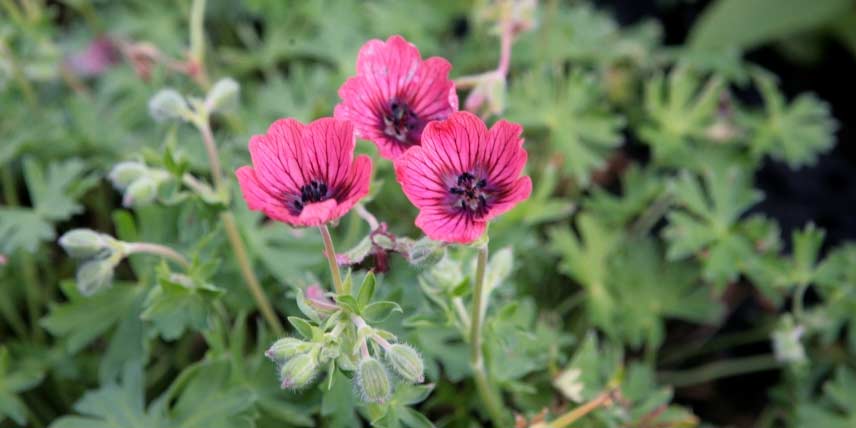
Geranium cinereum ‘Jolly Jewel Salmon’
Discover other Rockery perennials
View all →Available in 0 sizes
Available in 0 sizes
Available in 1 sizes
Available in 1 sizes
Available in 1 sizes
Available in 0 sizes
Available in 0 sizes
Available in 1 sizes
Available in 0 sizes
Available in 0 sizes
Graphic rock-garden plants to structure the setting
Grasses suited to dry rock gardens
Small ornamental grasses, such as Stipa, Carex or fescue, are perfect for structuring a rock garden in full sun and contrasting with groundcover rock garden plants. The species Stipa tenuifolia, also called angel’s hair, creates a superb fine, airy effect. Close relative Stipa pennata is striking for its long, fine flower spikes that float in the wind. For Carex, consider Carex comans, Carex buchananii, or Carex testacea. They offer beautiful foliage in shades from bronze to reddish. If you prefer a blue-tinged foliage, choose Festuca glauca, which has glaucous leaves.
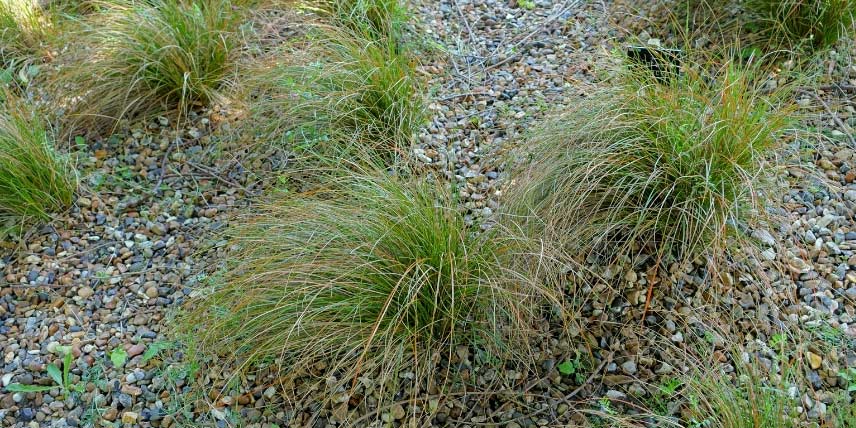
Carex testacea
Phlomis fruticosa, a structural, luminous rock garden plant
Also called Jerusalem sage, Phlomis fruticosa is a rock garden plant that brings height and structure to a sunny border. Its upright stems, bearing attractive yellow flowers, can reach 1.30 m tall, offering an interesting contrast with creeping perennials.
Its evergreen leaves are soft green–grey, simple in appearance and rather soft to the touch. Very drought-tolerant, Phlomis adapts well to poor or calcareous soils, making it an excellent low-maintenance rock garden plant, particularly suited to warm, dry climate.
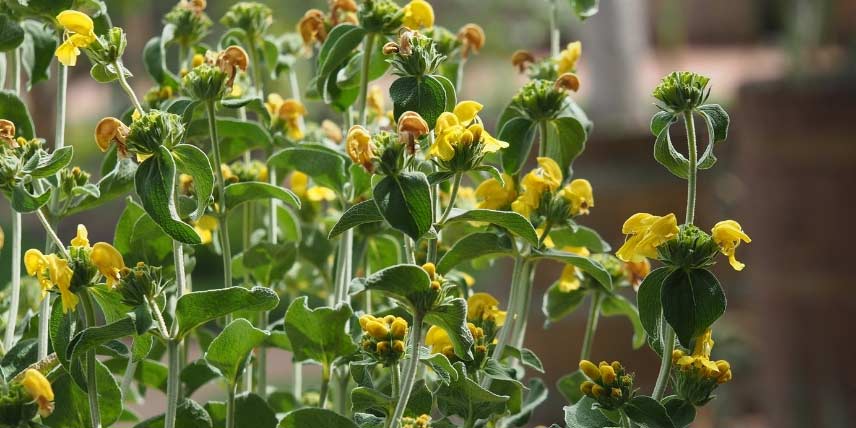
Phlomis fruticosa
Eryngium, a graphic, hardy rock garden plant
Eryngium, or sea holly, is an original rock garden plant, surprising for its silvery-blue hue and deeply cut, spiny bracts.It has an incredible architectural form, ideal for a modern, striking garden. It resembles an ornamental thistle. Discover particularly Eryngium planum, which has ramified stems bearing numerous globose, bluish heads surrounded by fairly slender bracts. Eryngium alpinum, known as alpine sea holly, is impressive for its large, deeply cut, majestic bracts. The maritime sea holly, Eryngium maritimum, bears leathery, thorny, silver-coloured leaves as well as globose inflorescences.
Hardy, undemanding and very drought-tolerant, sea holly fits naturally among low-maintenance rock garden plants.
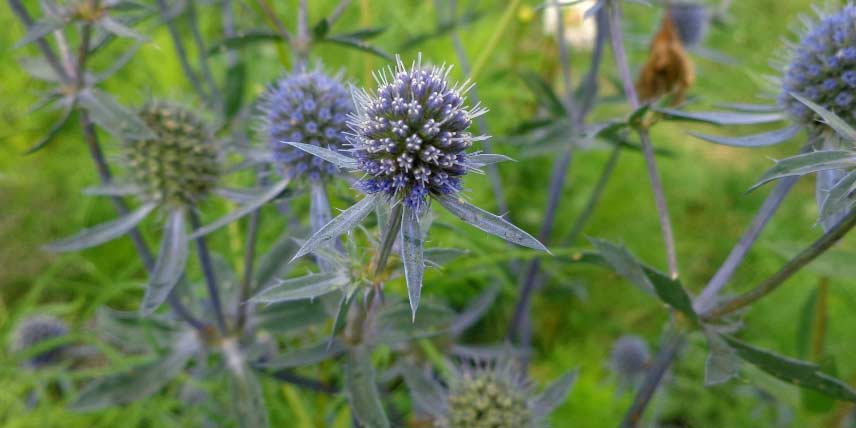
Eryngium planum
Agaves, rock garden plants with Mediterranean style
Agaves are particularly graphic rock garden plants, formed of handsome rosettes of fleshy, leathery leaves ending in a fine point. They can be green, glaucous blue, or variegated with white or cream-yellow. Notably Agave americana is imposing and majestic. Agaves are semelparous: they flower only once in their life. They take several years to flower, producing then gigantic, very tall and robust flower spikes, and afterwards die.
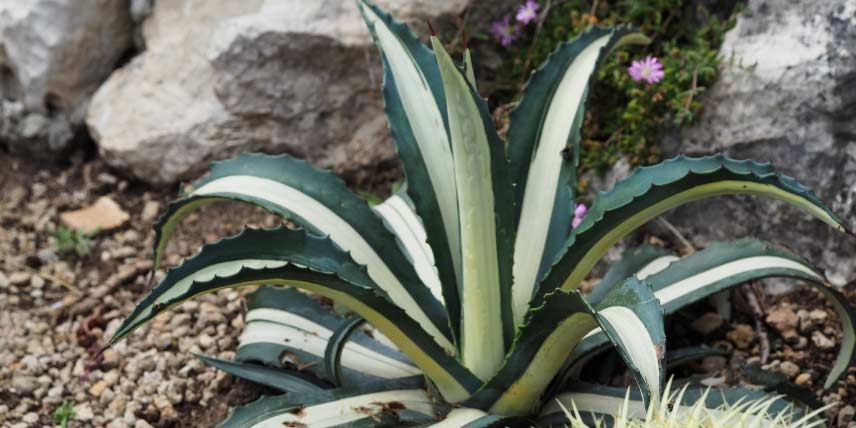
Agave americana ‘Mediopicta’
Lavender, a fragrant, melliferous rock garden plant
Symbol of Mediterranean gardens, lavender is a sun-loving rock garden plant as decorative as it is useful.It is valued for its mauve flower spikes, highly fragrant. It also has attractive silvery-grey foliage made up of small, fine, aromatic leaves. Lavender is an excellent melliferous plant that attracts pollinating insects. There are also varieties with white flowers (Lavandula angustifolia ‘Alba’) or pink ones (Lavandula angustifolia ‘Rosea’). It prefers calcareous soil. Although evocative of the south and sunshine, lavender is a hardy plant, able to withstand down to -15 °C (even -20 °C for the hardiest varieties).
Lavender is an easy-to-maintain rock garden plant, easily propagated by cuttings and benefits from being pruned each year after flowering to maintain a dense, regular habit.
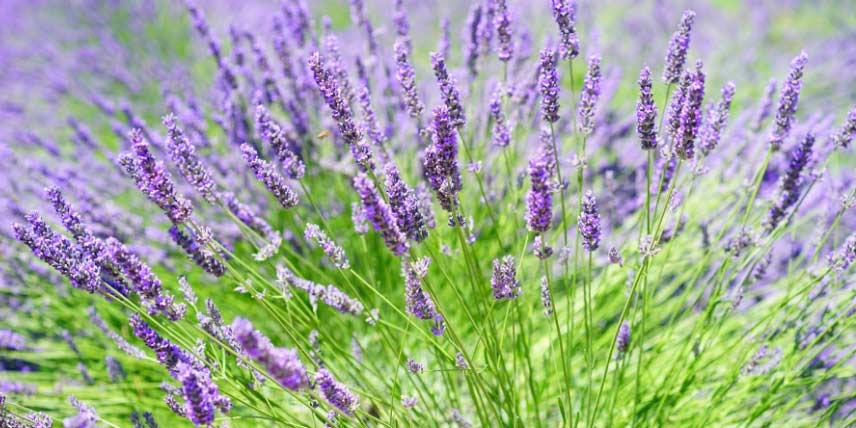
Cistus, hardy and floriferous
Cistus is a small bush that has the advantage of adding some height to your sunny rock garden.Place it at the back as a background plant, with small groundcover perennials in front. It bears beautiful flowers formed of five crinkled-looking petals. Petals can be white or pink, sometimes marked with darker macules for added contrast. At the centre, flowers bear a cluster of bright yellow stamens. Cistus leaves are simple and small, sometimes sticky. They are evergreen, so remain on the bush in winter.
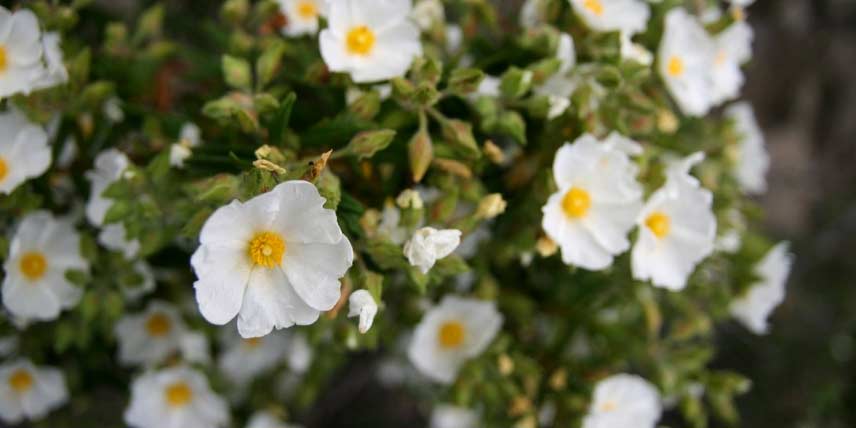
Cistus monspeliensis (photo Javier Sanchez Portero)
Santolina, for decorative foliage all year round
Santolina is a small shrub with fine, silvery foliage, very fragrant, and which produces bright yellow flowers in summer, gathered in heads. It grows up to 40 cm tall. The best known is Santolina petit-cyprès, Santolina chamaecyparissus, but there are other interesting varieties such as ‘Edward Bowles’, with cream-white flowers, or Santolina serratifolia, with bright, rounded yellow heads. Santolina copes very well with dry, stony soil, making it a good rock garden plant.
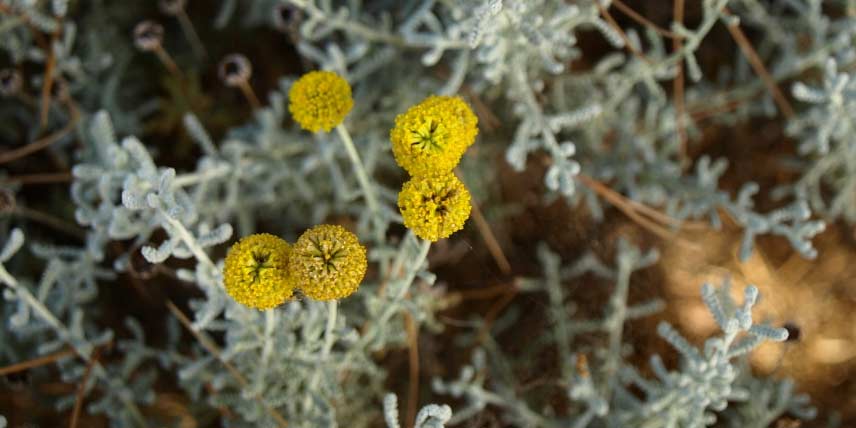
Santolina chamaecyparissus (photo Chixoy)
- Subscribe!
- Contents
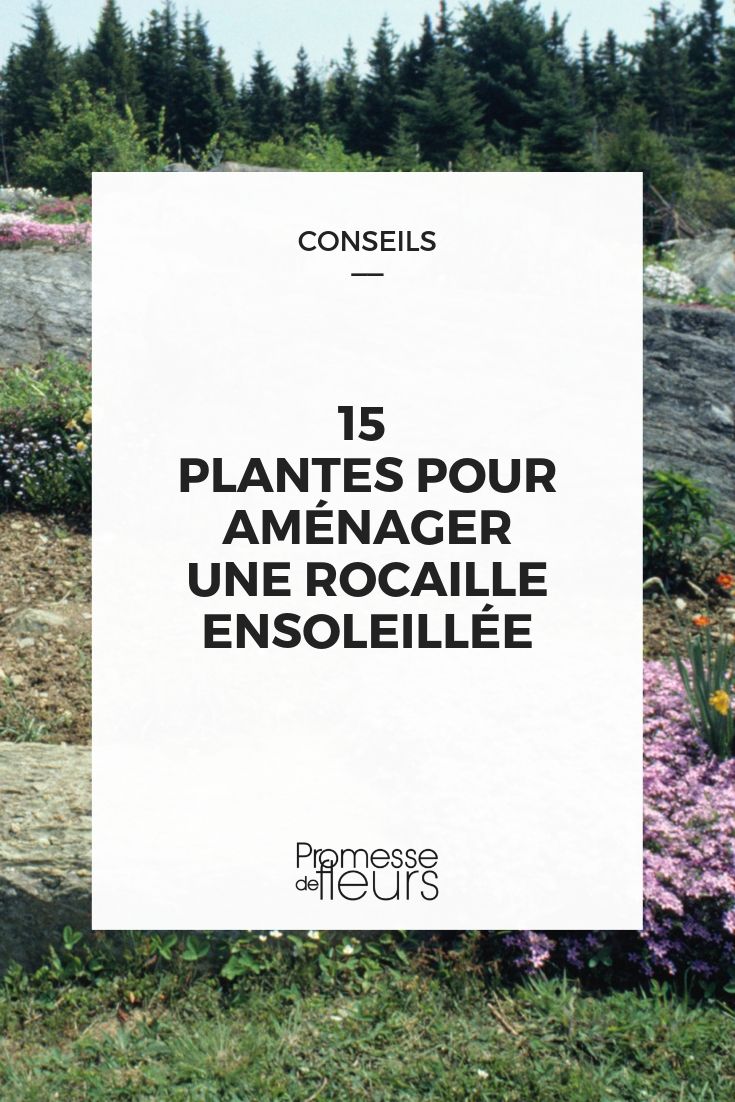
































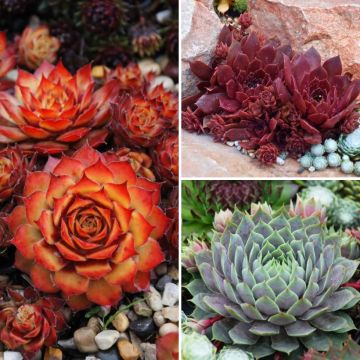
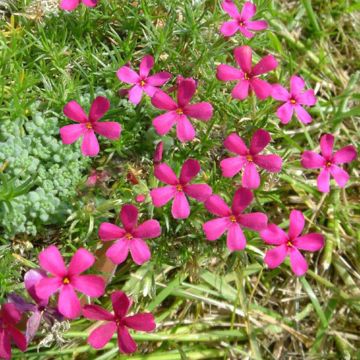
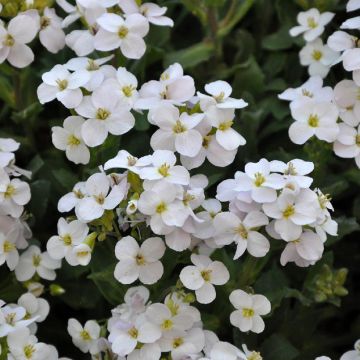
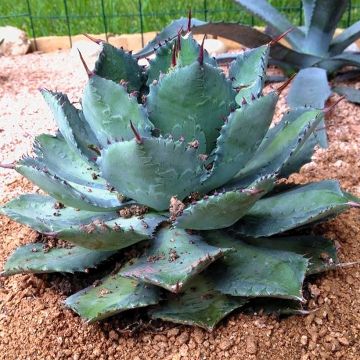
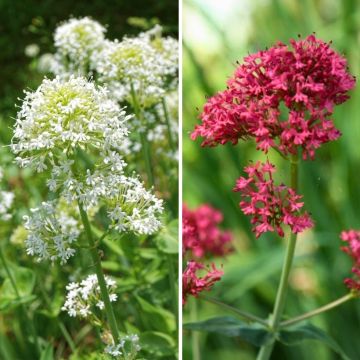
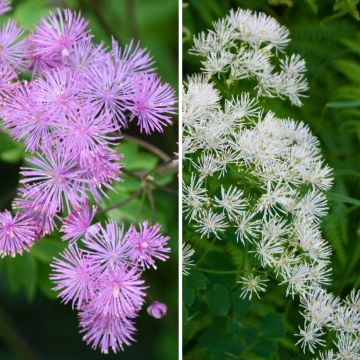

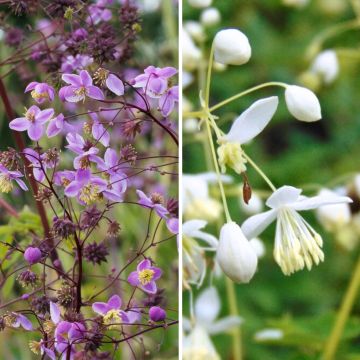
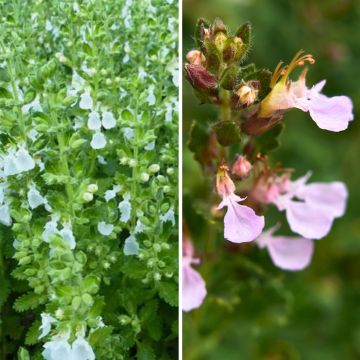
Comments